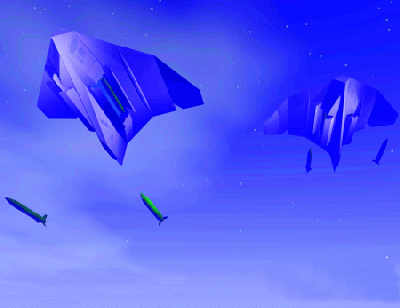
Graham Warwick/WASHINGTON DC
Operating aircraft from ships has never been easy, and a whole branch of military aviation has grown up around carrier-based operations. With interest in unmanned combat air vehicles (UCAVs) growing all the time, is was to be expected that the US Navy would have its unique concerns about the concept.
These were addressed in initial studies completed earlier this year by Boeing, Lockheed Martin and Northrop Grumman. The studies looked at different ideas for an unmanned naval strike aircraft (UNSA), with emphasis on those unique launch and recovery requirements imposed by shipboard operation.
The teams looked at three different types of naval UCAVs. Two of the products were designed to operate from surface combatant vessels, such as amphibious assault ships and destroyers, while the third was intended to be launched from submarines. The payload and mission rules were the same for each type, but the design constraints produced different results in each case.
Of the two UCAVs intended for operation from surface combatants, one is a deck-launched, horizontal-attitude, short take-off and vertical landing (STOVL) design. The second vehicle is a vertical-attitude vertical take-off and landing (VTOL) design. The third UCAV is designed for ejection from submarine ballistic missile launch tubes.
So far, only Lockheed Martin and Northrop Grumman have discussed the results of their studies. For the horizontal-attitude STOVL design, Lockheed Martin selected a scaled-down version of the shaft-driven lift fan propulsion system under development for its Joint Strike Fighter proposal. Northrop Grumman proposed a propulsion system with lift fans in the wings as the lowest risk solution for the horizontal-attitude STOVL design.
For the vertical-attitude VTOL UCAV, both Lockheed Martin and Northrop Grumman selected a tail-sitter design. Northrop Grumman proposed an aircraft using small, expendable, rockets to augment engine thrust for take-off and transition to forward flight. Launch and recovery would use a platform that would tilt vertically and place the engine and rocket exhaust over the water. Lockheed Martin says that its vertical-attitude VTOL UCAV is designed to take off and land under main engine power only.
DESIGN CHALLENGE
The third UCAV type presented perhaps the greatest design challenge, as the aircraft had to be packaged to fit into a modified ballistic missile launch tube. Lockheed Martin's resulting design is a bizarrely faceted vehicle with fold-out flying surfaces.
The UCAV is designed to be launched from the missile tubes of a submerged Trident submarine, using rocket boosters; Lockheed Martin's design employs two of the boosters used to launch Tomahawk cruise missiles from submarine tubes. The key to this UCAV concept, however, is designing the vehicle to the recovered and relaunched while the boat remains submerged.
Lockheed Martin says it has developed an "innovative" recovery and relaunch system concept for the Trident. Details are proprietary, the company says, but the submarine would have the capability to recover the UCAVs while remaining under water.
The air vehicles would return to a rendezvous point for splashdown and recovery. They would then be re-armed and refuelled inside the submarine, and made ready for launch on another mission. "Such a system would enable the submarine to have substantial conventional firepower capability for sustained operations," Lockheed Martin says.
While the Navy digests the results of its UNSA study, the companies are continuing independently funded research and development work to refine the concepts. Lockheed Martin, for example, has studied the use of its Sure Strike targeting system with unmanned combat aircraft.
The Sure Strike system allows forward air controllers to transmit digital target co-ordinates to incoming aircraft. The system is operational with US Air Force F-16 units based at Aviano AB in Italy. Lockheed Martin believes that extending the Sure Strike system to be interoperable with unmanned aircraft "-could be readily accomplished".
In a UCAV application, the target co-ordinates would be used to program global positioning system (GPS)-aided small smart bombs. "The combination of this type of system and GPS-aided weaponry would allow many different types of combat aircraft to effectively attack targets from higher altitudes and in all-weather conditions," says Lockheed Martin.
A system such as Sure Strike, where precision targeting is provided from the ground or another aircraft, could reduce UCAV costs by not requiring the vehicle to carry sensors capable enough for use on close air-support missions. Limiting the onboard sensor suite is key to achieving a target unit cost for a UCAV that is one-third that of the Joint Strike Fighter.
That target has been set by the US Defense Advanced Research Projects Agency, which is planning a UCAV technology demonstration in 2002, Boeing, Lockheed Martin and Northrop Grumman were awarded concept development contracts in April, and one team is scheduled to be selected in early 1999 to flight test two vehicles.
This programme is seen as taking the lead in exploring the tactical utility of UCAVs, and the US Navy will probably wait for the results of the land-based demonstration before deciding whether unmanned strike aircraft have a place on the decks, or in the tubes, of a future seaborne fighting force.
Source: Flight International























